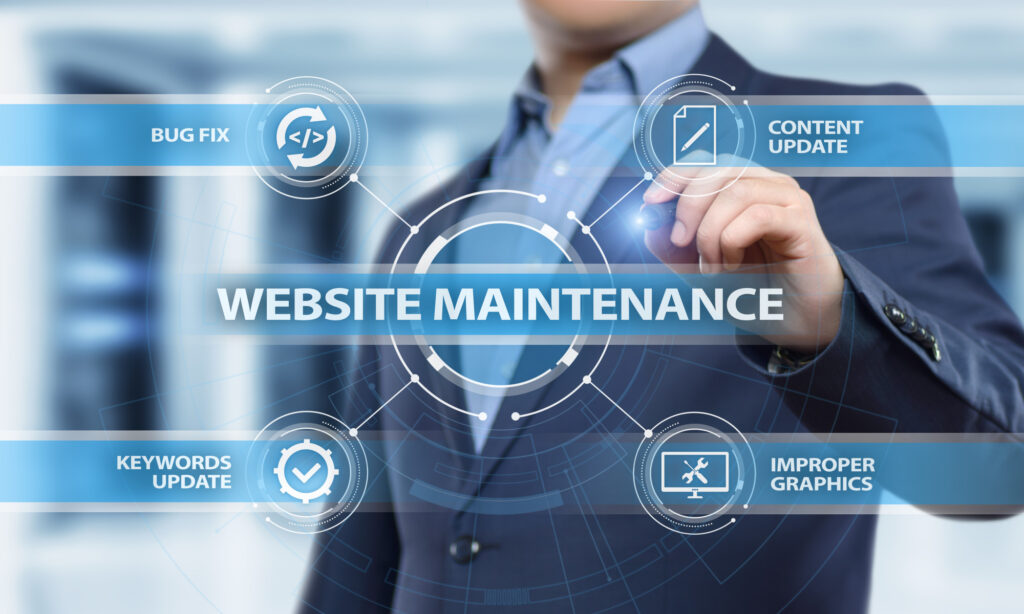Website maintenance, your website is often the first point of contact between your business and potential customers. It’s your digital storefront, your 24/7 salesperson, and a critical component of your online presence. However, creating a website is just the beginning—keeping it updated and well-maintained is equally important.
Website maintenance involves regularly updating, optimizing, and monitoring your website to ensure it remains functional, secure, and effective. Neglecting maintenance can lead to security vulnerabilities, poor performance, and a negative user experience. In this article, we’ll explore the importance of website maintenance and provide actionable tips to help you do it right.
Why Website Maintenance Matters
Website maintenance is essential for several reasons:
1. Ensures Security
Cyber threats are constantly evolving, and outdated websites are prime targets for hackers. Regular maintenance helps protect your website from security breaches, malware, and other vulnerabilities.
2. Improves Performance
A well-maintained website loads faster, functions smoothly, and provides a better user experience. This can lead to higher engagement, lower bounce rates, and increased conversions.
3. Boosts SEO
Search engines prioritize websites that are regularly updated and optimized. Maintenance tasks, such as fixing broken links and updating content, can improve your search engine rankings.
4. Enhances User Experience
A website that’s easy to navigate, up-to-date, and free of errors provides a positive experience for visitors. This builds trust and encourages them to return.
5. Supports Business Growth
As your business evolves, your website should too. Regular maintenance ensures your website remains aligned with your goals and can scale with your business.
Key Website Maintenance Tasks
To keep your website in top shape, here are the key maintenance tasks you should perform regularly:
1. Update Software and Plugins
Outdated software and plugins are common entry points for cyberattacks. Regularly updating your CMS, themes, and plugins ensures you have the latest security patches and features.
How to Update Software:
- Enable automatic updates for your CMS and plugins.
- Regularly check for updates and install them promptly.
- Remove unused plugins and themes to reduce vulnerabilities.
2. Backup Your Website
Backups are your safety net in case of a security breach, data loss, or technical issue. Regularly backing up your website ensures you can quickly restore it if something goes wrong.
How to Back Up Your Website:
- Use a reliable backup plugin or service.
- Schedule automatic backups daily or weekly.
- Store backups in a secure, offsite location.
3. Monitor Website Performance
Regularly monitoring your website’s performance helps you identify and address issues before they impact users. This includes tracking page speed, uptime, and user behavior.
How to Monitor Performance:
- Use tools like Google Analytics to track traffic and user behavior.
- Monitor page speed using tools like Google PageSpeed Insights.
- Set up alerts for downtime or performance issues.
4. Fix Broken Links
Broken links can frustrate users and harm your SEO. Regularly checking for and fixing broken links ensures your website remains functional and user-friendly.
How to Fix Broken Links:
- Use tools like W3C Link Checker to identify broken links.
- Update or remove broken links promptly.
- Set up redirects for pages that have been moved or deleted.
5. Optimize for SEO
Search engine optimization (SEO) is an ongoing process. Regularly updating and optimizing your website’s content, meta tags, and structure can improve your search engine rankings.
How to Optimize for SEO:
- Conduct keyword research and update your content accordingly.
- Optimize meta titles, descriptions, and headers.
- Build backlinks from reputable websites.
6. Test Website Functionality
Regularly testing your website’s functionality ensures everything works as intended. This includes forms, CTAs, navigation, and interactive elements.
How to Test Functionality:
- Test all forms and CTAs to ensure they’re working correctly.
- Check navigation on different devices and browsers.
- Use tools like BrowserStack to test your website across various platforms.
7. Review and Update Content
Outdated content can make your website appear neglected and reduce its relevance. Regularly reviewing and updating your content keeps it fresh and accurate.
How to Update Content:
- Update blog posts, product descriptions, and FAQs regularly.
- Remove outdated information and broken links.
- Use a content calendar to plan and schedule updates.

8. Ensure Mobile-Friendliness
With over 60% of global web traffic coming from mobile devices, ensuring your website is mobile-friendly is essential. A responsive design ensures your site looks and functions well on all screen sizes.
How to Optimize for Mobile:
- Use a responsive design that adapts to different devices.
- Test your website’s mobile performance using tools like Google’s Mobile-Friendly Test.
- Prioritize fast load times and easy navigation.
9. Monitor Security
Regularly monitoring your website for security threats helps you detect and address vulnerabilities before they can be exploited.
How to Monitor Security:
- Use security plugins or services to scan for malware and vulnerabilities.
- Set up alerts for unusual activity, such as failed login attempts.
- Regularly review server logs for signs of unauthorized access.
10. Analyze and Improve
Website maintenance is an ongoing process. Regularly analyzing your website’s performance and user feedback helps you identify areas for improvement.
How to Analyze and Improve:
- Use tools like Google Analytics to track user behavior.
- Gather feedback through surveys or reviews.
- Make data-driven updates to enhance user experience and trust.
Conclusion
Website maintenance is not just a technical task—it’s a critical aspect of running a successful online business. By regularly updating, optimizing, and monitoring your website, you can ensure it remains secure, functional, and effective.
Start implementing these maintenance tasks today, and watch as your website becomes a powerful tool for attracting and engaging customers. Remember, a well-maintained website is a reflection of your brand’s professionalism and commitment to quality.
High-Authority Links Included:
- Google Analytics – A tool for tracking website performance and user behavior.
- Google PageSpeed Insights – A tool for analyzing and improving website speed.

